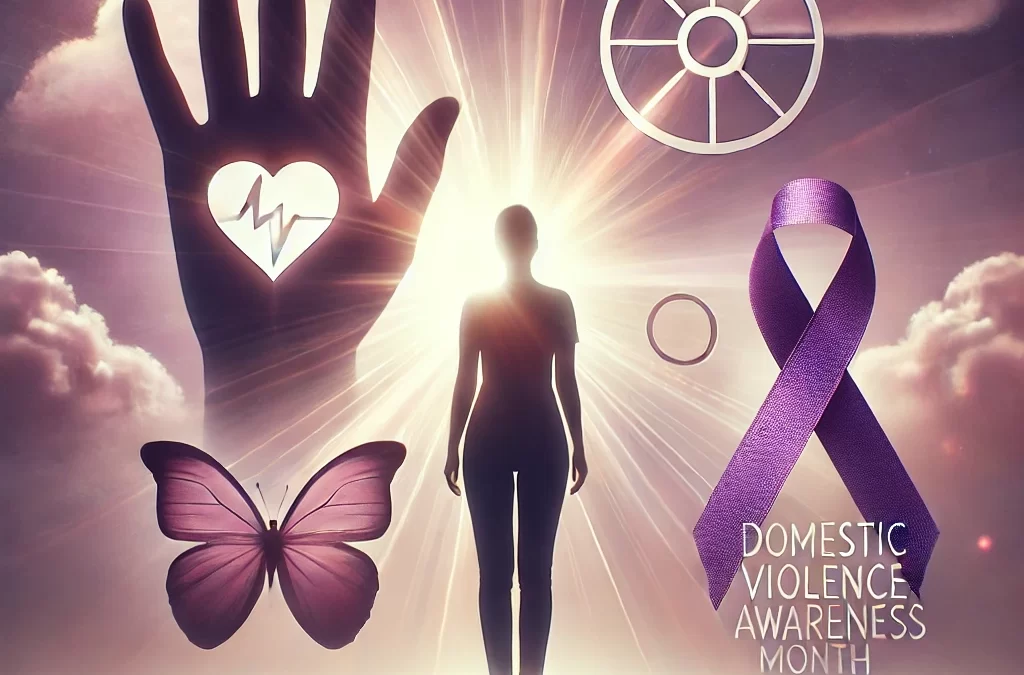October is Domestic Violence Awareness Month, a time dedicated to highlighting the issue of domestic violence, supporting survivors, and working toward prevention. Domestic violence is a widespread issue that affects individuals across all backgrounds, regardless of gender, age, or socioeconomic status. This month serves as a reminder to listen to survivors, advocate for their needs, and educate ourselves on how to prevent violence in our homes and communities.
Understanding Domestic Violence
Domestic violence can take many forms—physical, emotional, psychological, financial, and sexual abuse. It often involves a pattern of behavior that one person uses to gain control over their partner. While physical violence is often the most visible sign, emotional and psychological abuse can be equally damaging, leading to long-term trauma and harm.
According to the National Coalition Against Domestic Violence, nearly 1 in 4 women and 1 in 7 men experience severe physical violence by an intimate partner. These figures reflect the widespread nature of domestic violence, making it more important than ever to bring awareness and offer support to those affected.
Recognizing the Signs of Domestic Violence
Domestic violence often goes unnoticed because victims may hide their experiences out of fear, shame, or concern for their safety. Being able to recognize the signs can make a significant difference in helping someone in need. Some key indicators include:
Physical signs: Unexplained injuries, frequent bruises, or signs of physical harm.
Emotional signs: Low self-esteem, anxiety, depression, or sudden changes in behavior.
Control tactics: A partner monitoring movements, isolating the victim from friends or family, or controlling finances.
Fear or apprehension: The victim may seem constantly worried about pleasing their partner or avoiding conflict.
By learning to recognize these signs, we can provide support and guidance to those who may be experiencing abuse but are afraid to ask for help.
Ways to Support Survivors
Domestic Violence Awareness Month is a time to reflect on how we can help survivors and create a community where they feel safe and supported. Here are some key ways to offer support:
Believe and Listen: If someone confides in you about their experience with domestic violence, it’s important to believe them. Many survivors fear that they won’t be taken seriously, so offering a non-judgmental ear can provide a sense of relief and safety.
Share Resources: Providing information on resources like domestic violence hotlines, shelters, or counseling services can be life-saving. The National Domestic Violence Hotline (1-800-799-SAFE) is available 24/7 to offer support and connect survivors with the help they need.
Practical Help: Survivors often need practical assistance, such as transportation, temporary housing, or help with legal matters. Offering tangible support can help them navigate the challenges of leaving an abusive situation.
Respect Their Choices: Leaving an abusive relationship is not easy, and survivors may not always be ready to take immediate action. Respecting their decisions and being patient is important, as it allows them to regain control over their lives at their own pace.
Raising Awareness and Advocating for Change
Beyond supporting individual survivors, Domestic Violence Awareness Month encourages us to take action as a society. Raising awareness about domestic violence helps reduce stigma and increases understanding of how widespread the issue is.
Educating Others: By discussing domestic violence openly, we can help others recognize the warning signs and know how to respond if they encounter someone in need of help.
Community Involvement: Consider joining or supporting organizations that work with survivors of domestic violence, whether through donations, volunteering, or participating in awareness events like walks or fundraisers.
Advocating for Policy Changes: Supporting policies and programs that focus on preventing domestic violence and providing comprehensive resources for survivors can make a lasting impact. Legislative action can include pushing for more robust funding for shelters, legal aid, and mental health services.
Prevention Through Education
Prevention is a key part of addressing domestic violence. Teaching the importance of healthy relationships, respect, and open communication can help prevent violence before it begins. Schools, workplaces, and community organizations can play a pivotal role in educating people about consent, equality in relationships, and how to manage conflict without resorting to violence.
By promoting a culture of respect and awareness, we can help stop domestic violence before it starts.
Breaking the Silence
Domestic Violence Awareness Month is an opportunity to break the silence that often surrounds domestic violence. Many survivors suffer in silence due to fear, shame, or the belief that no one will understand. By speaking openly about domestic violence and offering support to survivors, we can help reduce the stigma and create a world where no one feels afraid to ask for help.
Conclusion: Moving Forward Together
As we observe Domestic Violence Awareness Month this October, let’s remember the importance of supporting survivors and working toward prevention. Whether through education, advocacy, or offering a listening ear, everyone can play a role in making our communities safer and more supportive for those affected by domestic violence.
Together, we can create a future where survivors are heard, supported, and empowered to rebuild their lives without fear.

